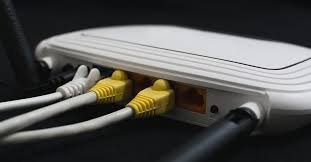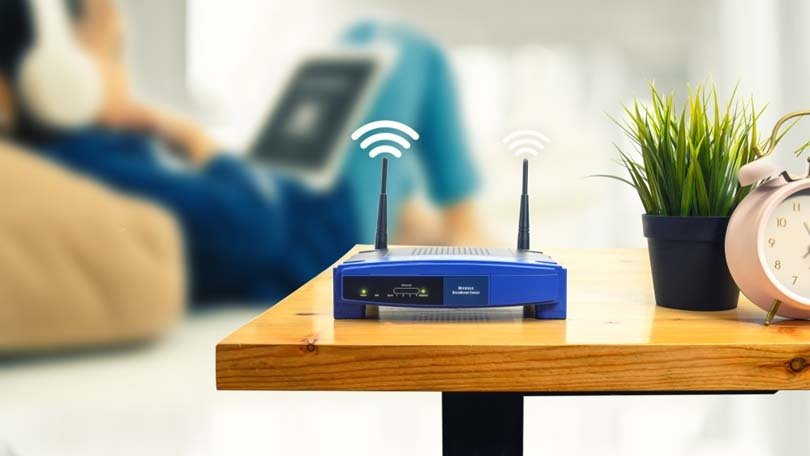Having a strong, reliable Wi-Fi signal is essential in today’s connected world. Whether you’re working from home, streaming videos, or gaming, a weak Wi-Fi signal can cause frustration and disrupt your activities. Fortunately, there are simple and effective ways to boost your Wi-Fi signal at home. In this guide, we’ll explore several strategies to improve your home’s Wi-Fi coverage, so you can enjoy fast and consistent internet everywhere.

Check Your Router’s Placement
The placement of your router plays a significant role in your Wi-Fi signal strength. If it’s placed in a corner of your home or behind obstacles, the signal may not reach all areas effectively. For optimal coverage, position your router in a central location, ideally elevated and free from obstructions like walls and large furniture.
Avoid placing your router near electronic devices like microwaves or cordless phones, as these can interfere with the signal. If possible, place the router in an open space, away from thick walls or metal objects, which can block the signal and weaken performance.
Upgrade Your Router
Older routers may not support the latest Wi-Fi standards, resulting in slower speeds and weaker signals. If your router is several years old, upgrading to a newer model can significantly improve your Wi-Fi performance. Look for routers that support the latest Wi-Fi standards, such as Wi-Fi 5 (802.11ac) or Wi-Fi 6 (802.11ax).
Wi-Fi 6 routers offer faster speeds, higher capacity, and improved performance in crowded environments, making them a great choice for households with multiple devices. Additionally, consider getting a dual-band router that supports both 2.4 GHz and 5 GHz frequencies. The 5 GHz band offers faster speeds, while the 2.4 GHz band provides better range and penetration through walls.
Use a Wi-Fi Extender or Mesh System
If you have a large home or areas with weak Wi-Fi coverage, a Wi-Fi extender or mesh Wi-Fi system can help. A Wi-Fi extender amplifies your existing signal, extending coverage to dead zones. Simply place the extender halfway between your router and the area with a weak signal to improve performance.
A mesh Wi-Fi system consists of multiple nodes that work together to provide a seamless Wi-Fi network throughout your home. These systems automatically switch between nodes as you move through your home, ensuring consistent coverage. Mesh systems are ideal for larger homes or homes with many devices connected to the network.
Change the Wi-Fi Channel
Wi-Fi interference is common in areas with many Wi-Fi networks, such as apartment buildings or densely populated neighborhoods. If your router is on the same channel as several others nearby, it can cause interference and slow down your connection. To improve your Wi-Fi performance, change the Wi-Fi channel on your router.
You can use a Wi-Fi analyzer app to see which channels are less crowded in your area. Once you identify a less congested channel, log into your router’s settings and change the channel to improve signal quality and speed. Most routers use either the 2.4 GHz or 5 GHz band, so you may need to adjust both channels to find the best performance.
Update Your Router’s Firmware
Router manufacturers regularly release firmware updates to improve performance and fix bugs. Keeping your router’s firmware up to date can help improve your Wi-Fi signal and security. To update your router’s firmware, log into your router’s admin panel (typically accessed through a web browser) and check for any available updates.
Some routers offer automatic firmware updates, while others may require you to manually download and install the updates. Be sure to read the router’s manual for specific instructions on how to update the firmware and ensure your network is running at its best.
Reduce Interference from Other Devices
Other electronic devices in your home can interfere with your Wi-Fi signal, especially those that use similar frequencies, such as cordless phones, baby monitors, and microwaves. To reduce interference, keep these devices away from your router and try to limit their use while using Wi-Fi.
If your router supports the 5 GHz band, switch to this frequency, as it is less likely to experience interference from common household devices. Additionally, you can invest in electromagnetic interference (EMI) filters to reduce signal disruption caused by electronic devices.
Use Wired Connections for High-Data Devices
If you have devices that require a lot of bandwidth, such as gaming consoles or streaming devices, consider connecting them directly to your router using an Ethernet cable. Wired connections are generally faster and more reliable than Wi-Fi, ensuring smooth performance without the risk of signal dropouts or slow speeds.
For devices that don’t need to be moved around often, using wired connections can help free up your Wi-Fi network for other devices, improving the overall speed and stability of your wireless signal.
Conclusion
Boosting your Wi-Fi signal at home is easier than you think. By adjusting your router’s placement, upgrading to a newer model, using a Wi-Fi extender or mesh system, and making other simple adjustments, you can ensure strong, consistent Wi-Fi coverage throughout your home. Whether you’re streaming, working, or gaming, these steps will help you enjoy fast internet without interruptions.











